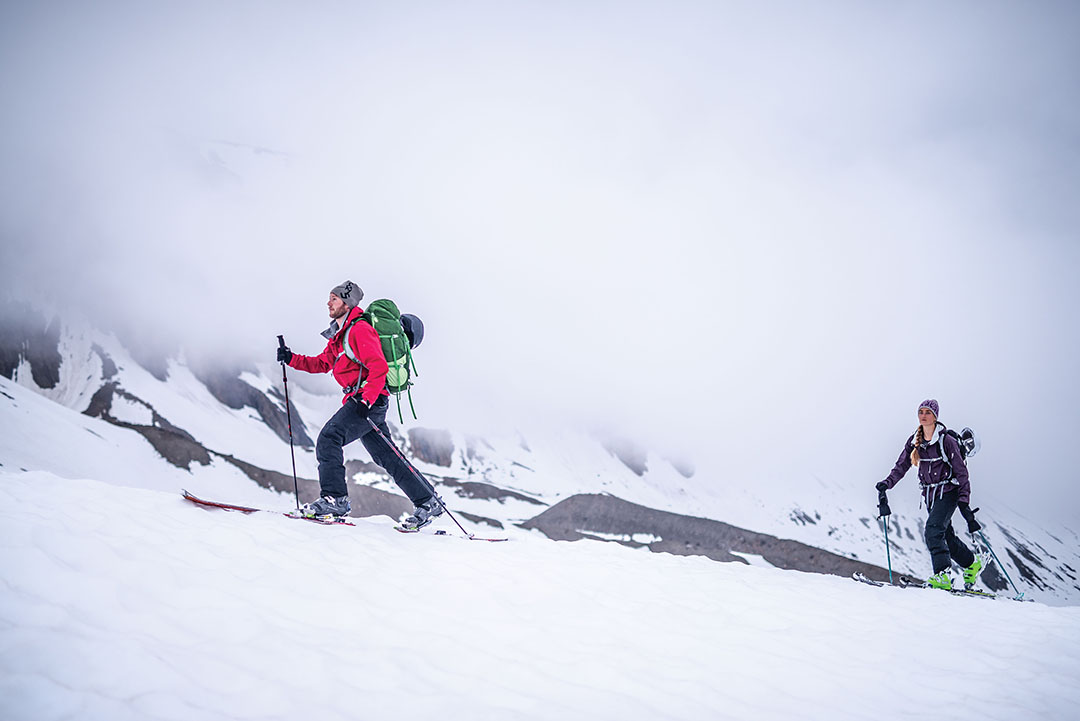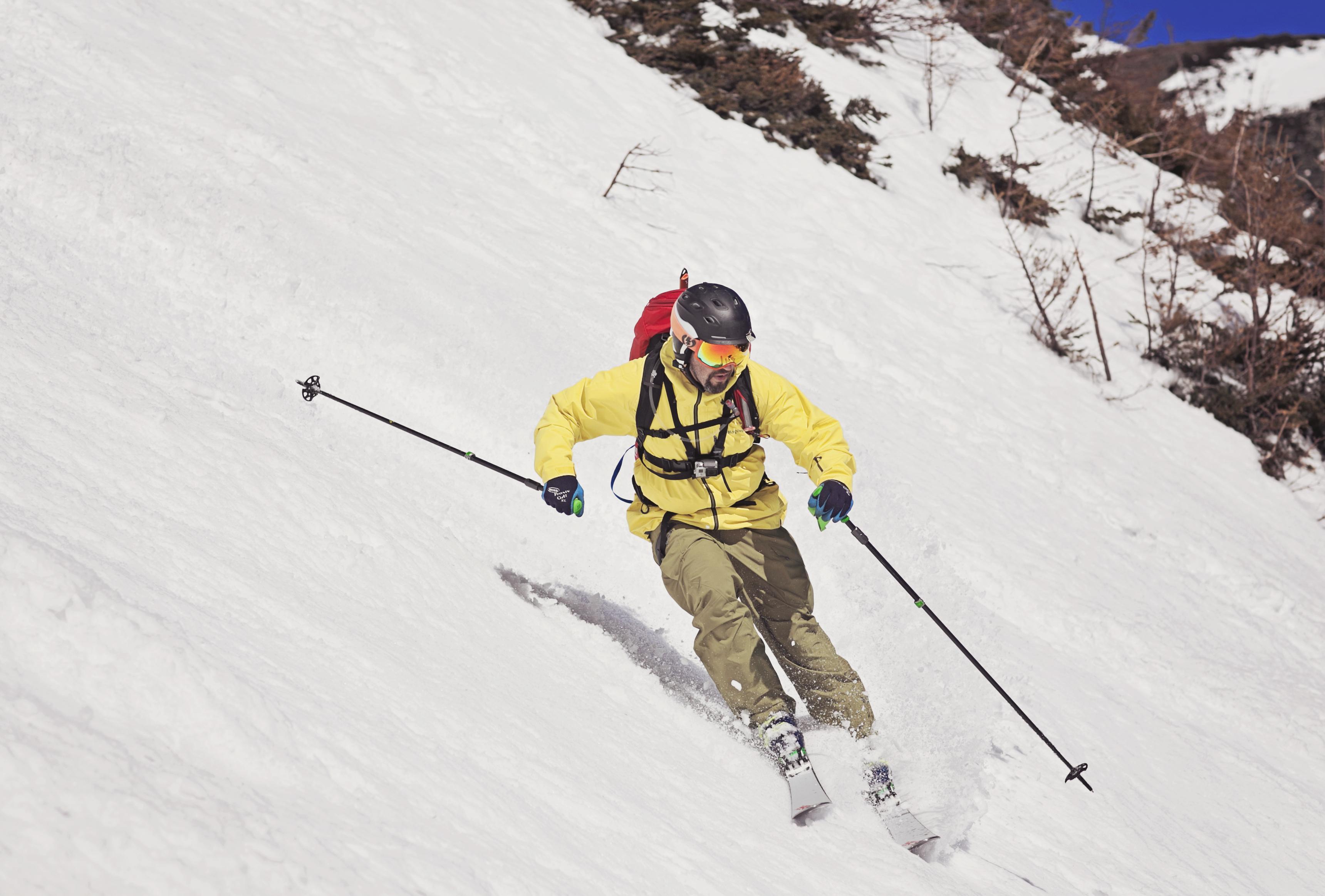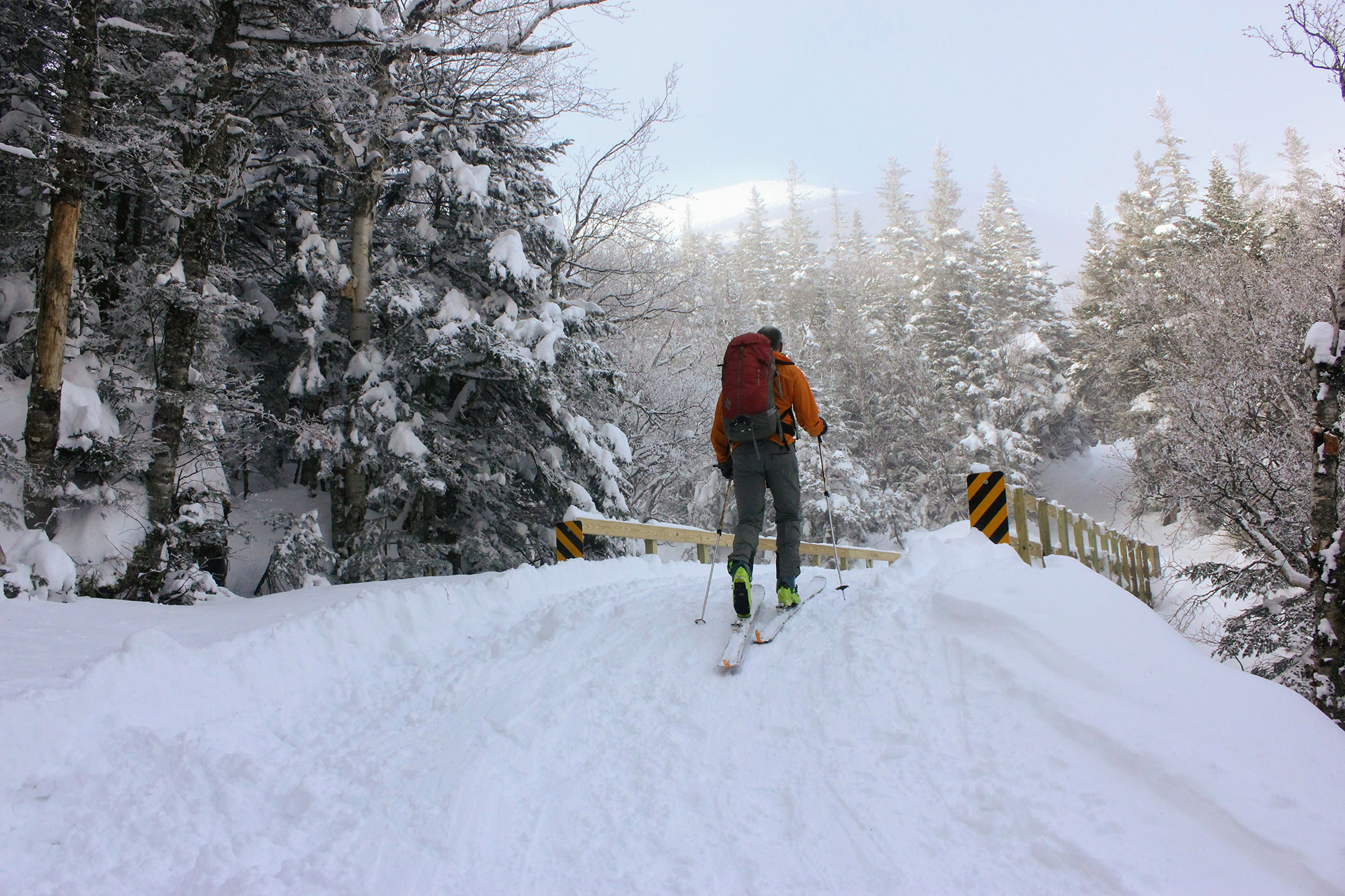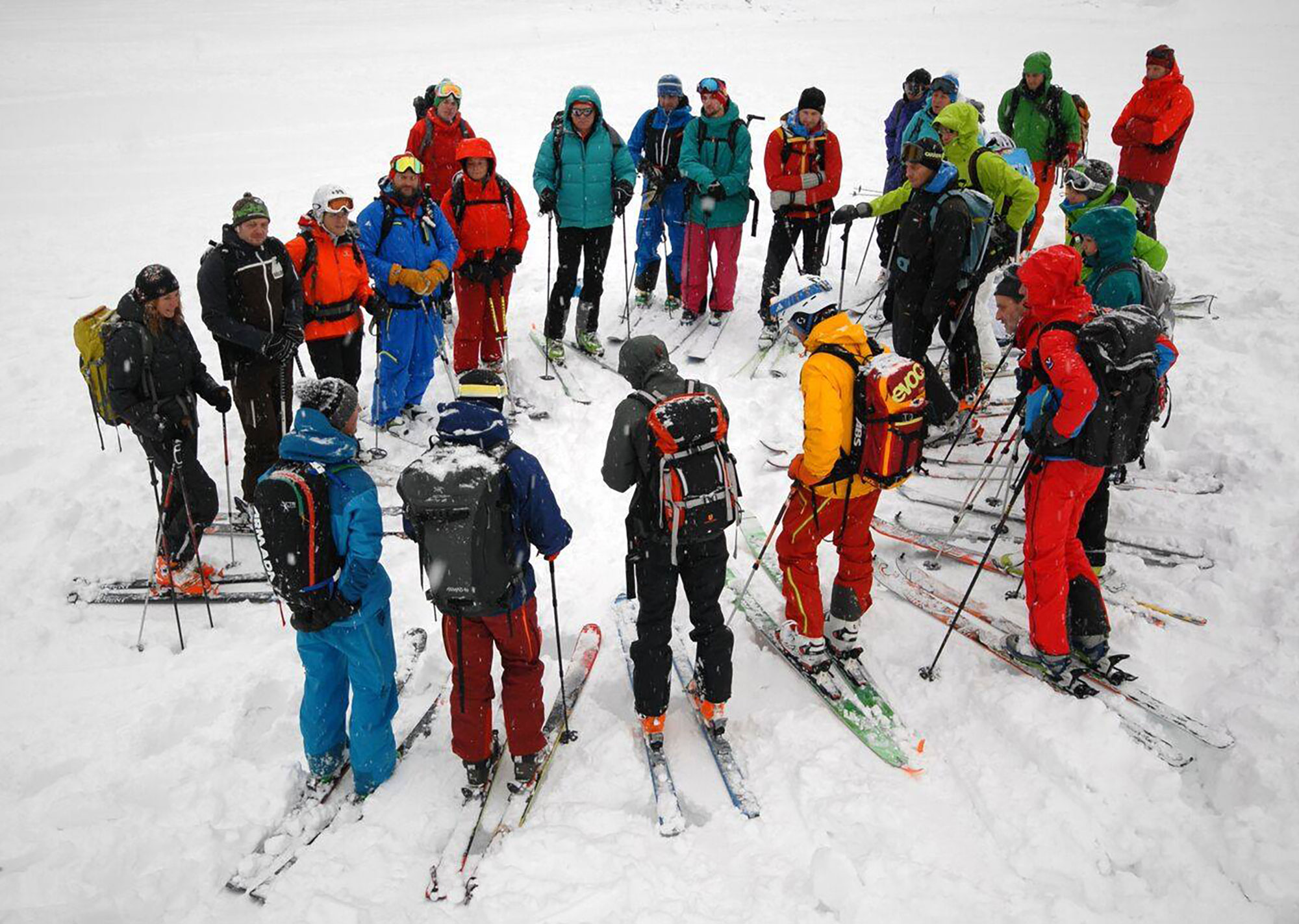With the COVID-19 pandemic continuing, skiing is different this winter. Whether you’re one of the many who’s bought a backcountry setup to discover what skiing is like away from the crowds at the resort or an experienced ski tourer who has explored much of what the Northeast has to offer, there’s always something in your skill set that can be improved. Before the winter is over, consider a backcountry-focused lesson with the EMS Climbing School to up your game.

Earning Your Turns
If you’re new to backcountry skiing this winter, getting comfortable with the gear and learning to skin uphill will be the steepest parts of your learning curve. Spending a day with an EMS guide is a sure way to accelerate the learning process.
According to Keith Moon, the Climbing School Manager, an introductory backcountry day focuses on the fundamentals of ski touring: skinning uphill, transitioning from the ascent to the descent, and managing terrain on the descent. Whether you have your own setup or borrow one from the school, at the end of the day you’ll feel much more confident traveling into the backcountry.
After your lesson, put that knowledge into action with a first tour of your own. Mount Cardigan, the Granite Backcountry Alliance glades in and around North Conway, and the Sherburne Trail on Mount Washington all make excellent first tours. Additionally, if the tide’s out in the backcountry, uphilling at the resort is a great way to get some vertical and earn your turns, all while minimizing the objective hazard.

Know Your Avalanche ABCs
Speaking of objective hazards, avalanche training is essential for anybody venturing into terrain where things might slide. One way to do this is to sign up for an AIARE Level 1 avalanche course, which Keith describes as one of the Climbing School’s most popular offerings. The three-day course provides a great foundation for the dos and don’ts of traveling in avalanche terrain, covering topics like tour planning, decision making in the field, rescue techniques, and basic snowpack tests. By the end of the course, students should have the knowledge necessary to have a successful (and, more importantly safe) day skiing something like Tuckerman Ravine.
If you’ve already taken a Level 1 course or can’t swing the whole course right now, spending a session with a guide reviewing avalanche fundamentals is another good option. A day focused on improving your knowledge is perfect for those just getting into avalanche terrain, providing a taste of what a full AIARE course is like while still scoring the backcountry goods.
Meanwhile, for more experienced folks, a day-long outing catered to your skill level is a perfect refresher. For those who are ready, a day spent “mock leading” a guide like Keith around the backcountry is invaluable, especially when they provide feedback about your tour planning, decision making, and backcountry techniques. For small groups with big post-pandemic ski touring plans, this is an ideal shakedown mission.

Expand Your Bag of Tricks
There are ample other developmental-focused reasons to consider spending a day (or two) with a guide this winter. Here are three:
- Become more efficient on the uphill. Sure, fitness is a big part of uphill efficiency, but if you can’t do a kick turn, don’t know when to deploy your ski crampons, or default to an overly steep skin track, improving your skill level will go a long way toward scoring huge vertical on subsequent tours.
- Improve your mountaineering skills essential for bigger objectives. Topics on a day like this include skills such as when and where to transition from skinning to booting, ascending using crampons and an ice axe, using a rope to add a margin of safety, and building basic snow anchors using your touring equipment. More advanced options include training for glacier travel and crevasse rescue. All in all, a day practicing these skills with a professional like Keith is sure to improve your mountain savviness.
- Dial your personal ski touring kit. Everybody’s kit can always be improved and spending some one-on-one time with a guide reviewing the contents of your kit is a great way to get a second opinion about what you’ve been toting around the backcountry and ensure that you’re purchasing the best equipment for your individual objectives. An added bonus—you’ll get to see what the professionals are carrying on terrain that you frequent.

Ski Some Gnarly Terrain
Assuming the snow gods deliver, the Gulf of Slides, Oakes Gulf, and Raymond’s Cataract offer some of the most spectacular lines in the East. Scoring a descent of one of these prized ski lines is an achievement, and having a trained professional like Keith along to manage the risks and snap some pics ensures that you’ll send safely and in style.
To sign up for a session with the EMS Climbing School this winter, visit www.emsoutdoors.com or call 845–668-2030.
Tim Peck and Doug Martland
Tim and Doug met long ago at the Eastern Mountain Sports in Canton, Massachusetts. Bonding over a love of slick Quincy Quarry granite, White Mountain sufferfests, and scheming up adventures while folding tee-shirts, today Tim and Doug collaborate to write about their favorite outdoor activities and occasionally get nostalgic about tee-shirt tables.
Related Posts
April 2, 2024
10 Tips for Mountain Biking Etiquette During Mud Season
One rough spring could ruin the…




